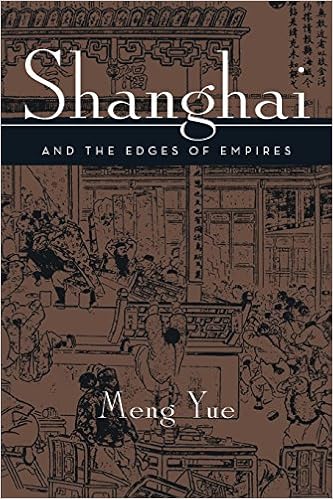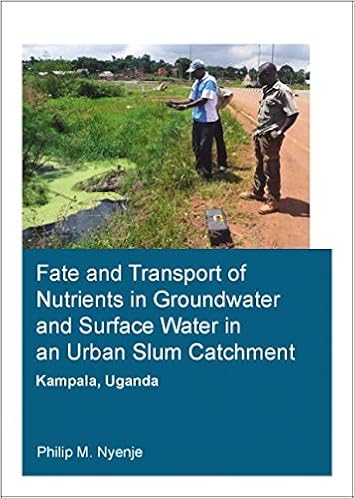
By Kiril Stanilov (auth.), Kiril Stanilov (eds.)
In the massive physique of literature produced over the last fifteen years at the transformation of jap eu societies after the autumn of communism, experiences investigating alterations in city shape and constitution were rather infrequent. but a profound reorganization of the style within which city area is appropriated has taken position, impacting the lifetime of over 2 hundred million city citizens within the sector. The styles of spatial association, that have been verified in this particularly constrained yet severe time-frame, tend to set the course of destiny city improvement in CEE towns for a protracted time.
This booklet makes a speciality of the spatial differences within the so much dynamically evolving city components of post-socialist significant and jap Europe, linking the restructuring of the equipped atmosphere with the underlying strategies and forces of socio-economic reforms. we are hoping that the precise debts of the spatial variations in a key second of city background within the sector will increase our realizing of the linkages among society and house, including to the data that's wanted for resolving the tough demanding situations dealing with towns through the globe initially of the twenty-first century.
Read or Download The Post-Socialist City: Urban Form and Space Transformations in Central and Eastern Europe after Socialism PDF
Similar urban books
The tiny kingdom of Kuwait grabbed the world's awareness throughout the Gulf warfare, in which its typical petroleum source turned the envy of its neighboring state of Iraq. yet Kuwait's background is going again lengthy prior to any oil was once came across, again to Mesopotamian settlements as early as 3000 BCE. perfect for prime university scholars in addition to basic readers, background of Kuwait deals a complete examine how the sort of small kingdom might, primarily, rule the realm with only one average source.
Shanghai and the Edges of Empires
Even ahead of the romanticized golden period of Shanghai within the Thirties, the famed Asian urban was once notable for its area of expertise and East-meets-West cosmopolitanism. Meng Yue analyzes a century-long shift of urbanity from China’s heartland to its shore. in the course of the interval among the decline of Jiangnan towns akin to Suzhou and Yangzhou and Shanghai’s early twentieth-century upward push, the overlapping cultural edges of a failing chinese language royal order and the encroachment of Western imperialists converged.
With the arrival of AIDS, the proliferation of gangs and medicine, and the uneasy sensation that enormous Brother is admittedly gazing us, the darkish part of city dwelling appears to be like overshadowing the brighter part of enjoyment, liberation, and chance. The Urbanization of Injustice chronicles those bleak city pictures, whereas taking to activity exclusivist politics, globalization concept, and superficial environmentalism.
City casual settlements or slums are transforming into speedily in towns in sub-Saharan Africa. quite often, a sewer process isn't current and the commonly-used inexpensive onsite wastewater dealing with practices, in most cases pit latrines, are usually unplanned, out of control and inefficient. accordingly, so much families get rid of their untreated or in part handled wastewater on-site, producing excessive a great deal of food to groundwater and streams draining those components.
- Varieties of Police Behavior: The Management of Law and Order in Eight Communities (Joint Center for Urban Studies Publicati)
- Milanese Encounters: Public Space and Vision in Contemporary Urban Italy
- Expectations of Modernity: Myths and Meanings of Urban Life on the Zambian Copperbelt (Perspectives on Southern Africa)
- Remaking Metropolis: Global Challenges of the Urban Landscape
- Urban Planning and Cultural Inclusion: Lessons from Belfast and Berlin
Extra info for The Post-Socialist City: Urban Form and Space Transformations in Central and Eastern Europe after Socialism
Sample text
The remaining Eastern European countries showed little progress in adjusting their institutional structures along the lines of free market democracies due either to delayed political reforms, as in the case of Ukraine, Belarus, and Moldova, or to the impact of the ethnic wars raging through the western Balkans during the 1990s. 3). 4). The first one is that all of the CEE countries included in these two groups have followed the same general pattern of up and Slovenia Czech Republic Hungary Slovakia tier 1 Estonia Lithuania Poland Latvia Croatia Russia tier 2 Bulgaria Romania Macedonia Belarus Bosnia Herzegovina tier 3 Ukraine Albania Serbia Moldova $0 $2,000 $4,000 $6,000 $8,000 $10,000 $12,000 $14,000 $16,000 $18,000 $20,000 Fig.
Eastern Germany, of course, has been a special case. During the 1990s, it received subsidies in the amount of over 500 Hungary Czech Republic Estonia Croatia Slovakia Slovenia 1990 1995 2000 2004 Latvia Poland Lithuania Bulgaria Romania Russia Ukraine $0 $500 $1,000 $1,500 $2,000 $2,500 $3,000 $3,500 $4,000 $4,500 $5,000 Fig. 5 FDI per capita in the CEE region, 1990–2004 Source: UNCTAD Political reform, economic development, and regional growth 29 billion USD from West Germany alone (Wiessner, 1999), a sum exceeding three times the total amount of FDIs received by all other CEE states by that time.
The flow of incoming FDIs in the automobile sector in Romania has also been accelerating for the last three years. Slovakia has become the star performer in this group. In a decade and a half, this country has been transformed from a state with no automobile assembly capacity into a key international player in this sector. The country is set to become the top OECD manufacturer of cars per capita in the world, with production facilities by Kia-Hyundai, PSA Peugeot Citro¨en, and Volkswagen. This enormous success in attracting automotive giants has been attributed to five factors (UNCTAD, 2004): • The three main production sites located in western Slovakia are in the middle of an emerging cross-border cluster of 13 car plants, 10 power train factories, and 40 • • • • Ivaniˇcka, Sr.



